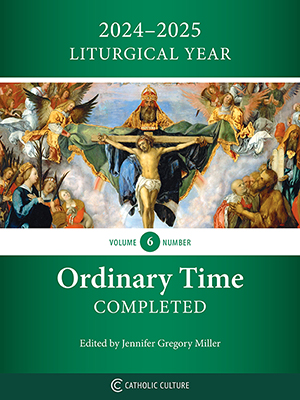The Vatican’s unhappy return of Canadian Indian gifts
By Phil Lawler ( bio - articles - email ) | Nov 24, 2025
The Catholic Church in Canada has been backpedaling since 2021, when the reports first appeared of mass graves at the “residential schools” run by Catholic religious orders for children of the indigenous (Indian) tribes. To date, exactly zero such “mass graves” have actually been discovered. But critics of the Church have never let a lack of evidence interfere with a good story, so the narrative endures.
So the Catholic Church is the “bad guy” in this story, which involves a campaign by the government to separate Indian children from their communities, and the failure of the government to provide enough funding so that the residential schools could furnish adequate food, clothing, and shelter for those children. Yes, they lived in poverty; so did the religious who cared for them.
In July 2022, prompted by numerous demands from Canadian political leaders—including Prime Minister Trudeau—Pope Francis issued a formal apology for the “deplorable conduct” for administrators at the residential schools, for the “ways in which many members of the Church and of religious communities cooperated, not least through their indifference, in projects of cultural destruction and forced assimilation promoted by the governments of that time, which culminated in the system of residential schools.” No doubt there had been some “deplorable conduct” in the schools; what school system is without its scandals? But the papal apology effectively endorsed a false narrative, implicitly accepting that the Church, not the government, should shoulder the blame.
Sadly, the vilification of the Church has provoked a spate of anti-Catholic violence. Arson attacks on Catholic churches and schools have become common; convictions of the perpetrators have been rare. Church leaders have been slow to complain; they have learned from painful experience that when the mass media choose a villain, any publicity—even a cry for protection from violence—becomes an occasion for further obloquy. Better to be quiet, to suffer in silence, than to stir the pot and risk even more violence.
But where does this passive approach leave those indigenous Canadians who profited from their time at the residential schools? Where does it leave the Catholic members of the tribe, who take pride in both their cultural heritage and their Catholic faith?
Earlier this month, in another bid for reconciliation, the Vatican announced that a collection of Indian artifacts, which had been donated by indigenous communities to the Vatican Museums a century ago, would be returned to Canada. That gesture drew an interesting response from Ashley Frawley, a Catholic with roots in the indigenous community, in Compact magazine:
But when the Vatican returned 62 artifacts from its ethnographic collection on November 15, it framed the move as “part of the Catholic Church’s reckoning with its role in helping suppress Indigenous culture in the Americas.” But is Catholicism not my culture? The Vatican’s return of artifacts to their “rightful owners” does more than acknowledge past wrongdoing; it implies a clean separation between “their” religion and “our” identity. In doing so, it affirms the broader cultural fantasy that indigenous people are never active players in history or universal humanity, only ever the victims of its imposition.
In other words the Vatican’s decision to return a gift that had been freely made by the indigenous peoples lent still more support to the false notion that the relationship between the Church and the tribes can only be seen as a conflict, a case of us vs. them.
As Frawley points out, the treatment of the indigenous peoples as perennial victims has been a rich source of material—not only for journalists, but for sociologists and social engineers who promise the glorious restoration of the tribal cultures. Those efforts have not noticeably improved the life of the people they purport to help, however. Whereas the residential schools, for all their faults, can offer success stories—if they have a chance to penetrate the wall of manufactured outrage.
The history of Christian evangelization is a history of encounters with different cultures, often marred by conflicts, but ultimately yielding conversions. All across the world, members of one tribe after another have embraced the faith, coming to see themselves as Catholics as well as members of their particular ethnic groups. The Church, in turn, sees those new members as part of the flock, not as members of an alien group. The story is no longer us vs. them; it is “we.”
If that is the case in Canada, however, what does it mean for “the Church” to return gifts that were offered by Catholics? Frawley, who in theory should be mollified (dare I say patronized?) by the return of those artifacts, is instead troubled. She concludes her excellent essay:
Even those who are not Catholic should be able to recognize in the church an aspiration for something greater than our parochial, “ancient and venerable prejudices and opinions.” Those artifacts lived in the Vatican for 100 years, part of the shared history of the Church that at least in principle belonged to all its members. As the Vatican now hands them back, we must ask: Are we not Catholics, too?
Read moreSound Off! CatholicCulture.org supporters weigh in.All comments are moderated. To lighten our editing burden, only current donors are allowed to Sound Off. If you are a current donor, log in to see the comment form; otherwise please support our work, and Sound Off!
- Posted by: nix898049 - Dec. 06, 2025 7:48 PM ET USA
An unfortunate decision, indeed.
- Posted by: rfr46 - Nov. 26, 2025 12:37 PM ET USA
Great essay, as is the piece by Ashley Frawley. The Vatican decision in question appears to be another unfortunate carryover from the previous pontificate. I hope that it does not represent original thinking from PL, whose missionary work in Peru should have led to a different conclusion.








